Kinesthetic Learning Style: Definition, Characteristics & Benefits in 2024
- What is Kinesthetic Learning?
- How Kinesthetic Learners Learn
- Characteristics of Kinesthetic Learning Style
- Benefits of Kinesthetic Learning Style
- Kinesthetic Teaching Tools
- Kinesthetic Teaching Methods
- Steps to Implementing Kinesthetic Learning Style In Your Classroom
- Career Options for Kinesthetic Learners
- Start Teaching the Kinesthetic Style
Kinesthetic learning, also known as tactile learning, is a learning style in which individuals learn best through physical activities such as touching, moving, or performing hands-on tasks.
Kinesthetic learners are often described as hands-on learners who require active participation and physical engagement to understand and retain new information fully.
They enjoy hands-on activities such as building, crafting and creating things. They also tend to doodle a lot while listening.
Unlike other learning styles, such as auditory and reading/writing, where learners prefer to listen or read, kinesthetic learners prefer to learn by doing and experiencing.
Today, we’ll explain everything educators need to know about kinesthetic learning. We’ll cover everything from benefits to characteristics and demonstrate real examples of how you can implement it.
What is Kinesthetic Learning?
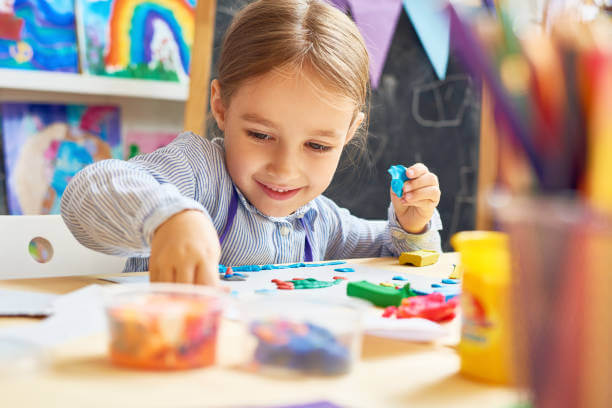
According to Cambridge Dictionary, the word kinesthesia means knowing where the parts of your body are and how they are moving.
It describes the type of learning that emphasizes physical activity and hands-on experiences as the primary means of learning and understanding new information.
For kinesthetic learners, simply reading or listening to information may not be enough to fully comprehend or retain it. Instead, they must engage in hands-on experiences.
For example, if you’re covering a topic on how to plant strawberries, you may read about it, watch instructional videos, and have group discussions. But, a kinesthetic learner will only understand and remember if you actually plant the strawberries.



Kinesthetic learning is one of four different learning styles in the VARK model.
The VARK model is a framework used to describe different learning styles. It was developed by Neil Fleming in the late 1980s, and it categorizes learners into four main categories based on their preferred learning method.
The four learning styles in the VARK model are:
- Visual learners: Prefer to learn through visual aids such as diagrams, pictures, and videos.
- Auditory learners: Learn better through listening, either through lectures, discussions, or podcasts.
- Reading/Writing learners: Prefer to learn through written material, such as books and articles.
- Kinesthetic learners: Learn through hands-on activities and physical experiences.
How Kinesthetic Learners Learn
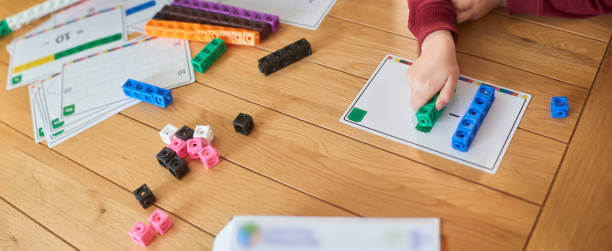


As mentioned, kinesthetic learners learn through real-life experiences and physical activity. They tend to learn best by doing, touching, and manipulating objects.
Kinesthetic learners enjoy acting out scenarios, which helps them better understand the material and apply it to real-world situations.
Kinesthetic learning takes place in normal daily life too. For instance, imagine wanting to learn how to ride a bike.
No amount of instructions will help as much as getting on the bike, falling a few times, and learning how to maneuver the whole process.
The table below shows the differences between a kinesthetic learner and a visual learner.
| Kinesthetic Learners | Visual Learners |
|
|
|
|
|
|
Characteristics of Kinesthetic Learning Style
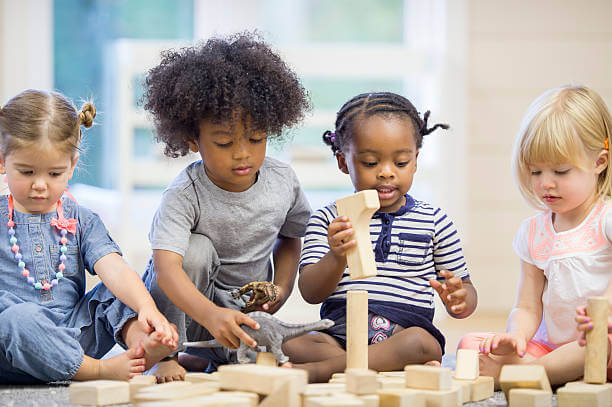


For kinesthetic learners, doing things and engaging in physical activity is critical for effective learning. It works better for them than seeing or listening.
By doing things, they can physically connect with the concept, which helps with memory retention.
They also get to receive immediate feedback on their actions. This feedback helps them adjust their actions where needed leading to better learning outcomes.
For young children, you can spot kinesthetic learning characteristics in several ways. For example, mimicking the actions of others, asking to touch things, tearing things apart, or fidgeting when asked to sit still for long periods.
The following are some common characteristics of kinesthetic learners:
- Good at visualizing how objects fit together and may excel in activities that require physical coordination, such as sports or dance.
- Very active and often prefer activities that involve movement, such as sports or dance.
- Good at multitasking and can perform physical tasks while simultaneously processing information.
By understanding their learning style and providing opportunities for active learning, you can help kinesthetic learners thrive and reach their full potential.
Benefits of Kinesthetic Learning Style
Kinesthetic learners typically play with the material and need physical sensations to learn. This has several benefits for students.
Let’s explore the benefits of kinesthetic learning style.
Improved Comprehension
Inadequate teaching styles can prevent kinesthetic learners from learning as effectively as other students.
For example, the lack of hands-on activities can make it harder for kinesthetic learners to engage with the material.
In another instance, kinesthetic learners may struggle with written assignments and tests because they prefer to learn through physical activity. If a teacher only emphasizes written work, kinesthetic learners may feel left behind.
If teachers do not recognize the importance of different learning styles, they may not provide opportunities for kinesthetic learners to learn effectively. This can lead to frustration and a lack of engagement in the classroom.
On the other hand, when kinesthetic learners are being taught in a way tailored to their learning method, the comprehension process can be very effective. This can lead to better academic performance and greater engagement with the learning process.
Supports Cognitive Development
Many studies suggest that thinking and movement are connected in our brains. Pairing cognitive activity with movement is an effective way to help kinesthetic learners stay focused and interested in the material they are learning.
Movement also helps kinesthetic learners understand concepts by providing a physical representation of the ideas they are trying to learn. For example, a kinesthetic learner will understand the concept of gravity better by acting out the force of gravity on their body.
By engaging their bodies and minds simultaneously, kinesthetic learners improve their retention, understanding, and creativity.
Better Social Skills
Kinesthetic learning often involves group work and collaboration, which helps students develop teamwork and communication skills.
Group role-playing, teamwork, and cooperation are important elements that help kinesthetic learners develop social skills.
Through working together to complete physical tasks, learners can practice listening to others, providing feedback, and problem-solving as a group.
Additionally, kinesthetic learning improves verbal communication skills. Through practicing activities with peers, learners get better at articulating their thoughts and ideas.
Boosts Creative Thinking
Kinesthetic learning promotes divergent thinking. This is the ability to think creatively and generate multiple solutions to a problem.
By engaging in physical activities, learners approach problems from different angles and explore multiple solutions.
Kinesthetic learning also encourages learners to experiment and try new things. By physically engaging with materials and manipulating them in different ways, learners explore and discover new ways of thinking and problem-solving.
For instance, kinesthetic learners can participate in building projects, such as constructing models or structures to develop creativity and imagination.
Improves Muscle Memory
Kinesthetic learning helps improve muscle memory by engaging the learner's body in the learning process.
Muscle memory is a type of procedural memory that involves the ability to repeat a physical task or movement without conscious thought. It’s developed through repeated practice.
Kinesthetic learning often involves using the whole body to perform physical tasks. This helps develop muscle memory by engaging multiple muscle groups and making the movement more natural and automatic.
Examples of kinesthetic learning activities that can improve muscle memory include
- Sports such as shooting a basketball or practicing dance routines and other physical activities.
- Performing arts, such as theater or dance, that involve repeated physical movements and actions.
- Fine motor skill development, such as drawing or playing musical instruments, that involve precise movements and hand-eye coordination.
Kinesthetic Teaching Tools
There are many tools or activities that teachers can use to help kinesthetic learners understand and retain information.
We’ll now look at the kinesthetic learning activities and how they can be implemented in a classroom setting.
Animations
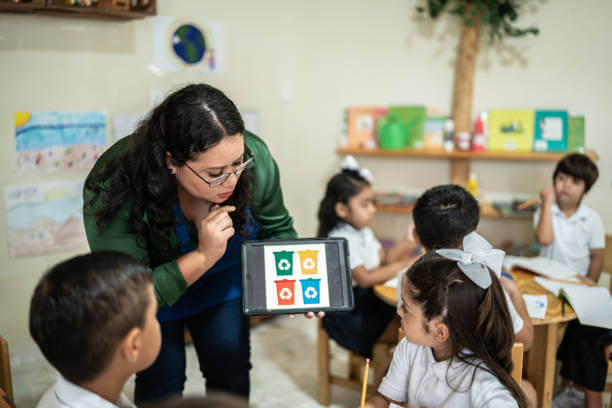


Animations are visual representations of movement and change created through a series of sequential images or frames. They can be created using hand-drawn images, computer-generated graphics, and stop-motion techniques.
Animations can tell stories, explain complex concepts, and demonstrate the movement of objects or the flow of a process.
For example, you can create a series of photographs of a physical object or scene, with slight changes between each photo. When the photos are played back in sequence, they create the illusion of movement.
You can use this kind of animation to explain concepts such as evaporation, movement of blood through the circulatory system, and more.
By using animation techniques, you can depict complex processes and concepts in a simplified and interactive way for the kinesthetic learner.
Stand-on Simulations



Stand-on simulations refer to a type of training or exercise where participants remain standing throughout the simulation instead of sitting or moving around.
In stand-on simulations, participants are asked to role-play different scenarios and make decisions under pressure while standing and moving around a simulated environment.
This helps improve physical stamina, coordination, and decision-making skills, while also providing a more dynamic and engaging learning experience.
By engaging in stand-on simulations, kinesthetic learners can use their bodies and physical movements to better understand and internalize new information and skills.
In addition, stand-on simulations help kinesthetic learners develop problem-solving and decision-making skills by requiring them to react quickly and make decisions while in motion.
Micro-Learning Lessons
Microlearning is a teaching method that delivers content in short, bite-sized lessons designed to be consumed quickly and easily.
Microlearning lessons are designed to be brief and concise, with most lessons ranging from a few minutes to 15 minutes or less. Here, teachers focus on one learning objective at a time.
Micro-learning lessons can be delivered as experiments, videos, podcasts, infographics, or interactive quizzes, to make the learning experience more engaging and interactive.
By breaking down content into smaller chunks, learners can absorb information more easily and retain it for longer.
Interactive Documents
Interactive documents are digital documents that allow users to engage with the content in a more interactive way.
Unlike traditional static documents, such as PDFs or Word documents, interactive documents include multimedia elements such as images, videos, gifs and clickable links.
They allow users to navigate and explore the content more easily. Some common examples of interactive documents are:
- Interactive PDFs
- E-books
- Online magazines and catalogs
- Interactive digital presentations such as polls and quizzes
Interactive documents provide a more engaging and interactive way to present information and assess learning outcomes.
Role-Playing Exercise
Role playing is a teaching method that involves simulating real-life situations in which learners take on different roles or characters.
Role playing is an effective tool for kinesthetic learners, because it provides them with an opportunity to engage with the material in a more hands-on and interactive way.
For example, let's say you are teaching a lesson on conflict resolution. You could start by presenting a scenario, such as a disagreement between two friends.
To help your kinesthetic learners better understand and apply the material, you could ask them to take on different roles, such as the two friends and a mediator.
Your learners could then act out the scenario, practicing important conflict resolution skills such as effective communication, active listening, and problem-solving.
After the role play, you could facilitate a discussion about what worked well, what could have been improved, and how the conflict could have been resolved more effectively
By using role playing in this way, you are providing your tactile learners with an opportunity to engage with real-life examples, which helps them understand better.
Kinesthetic Teaching Methods
As a teacher, you should be able to determine which of your learners are kinesthetic. This way, you can employ teaching methods to improve their academic performance.
If you incorporate kinesthetic learning in your classroom, you’re not only benefiting your kinesthetic learners but also other students with different approaches to learning.
Let’s look at ways you can give a kinesthetic learning experience to your entire classroom.
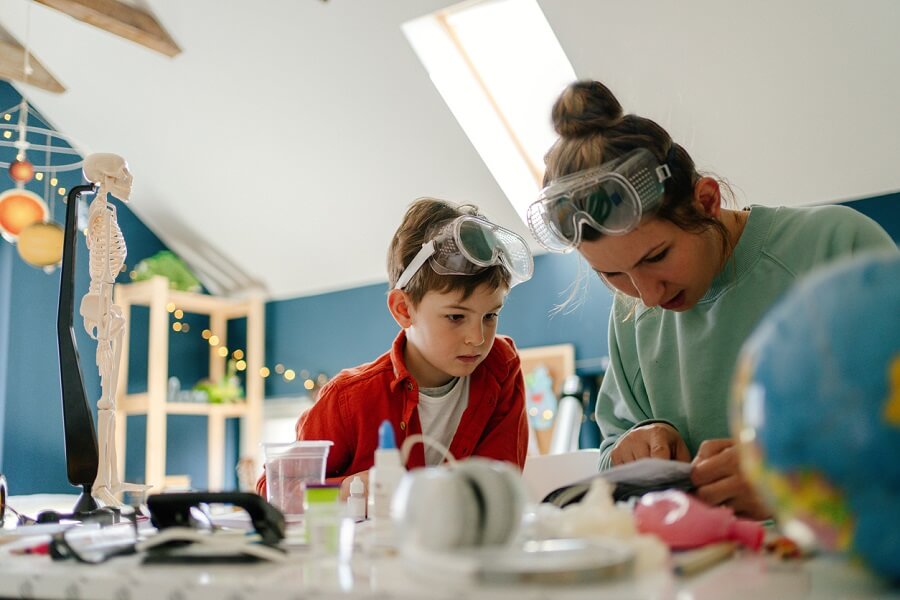


Incorporating Kinesthetic-Friendly Activities in Your Lessons
Research has shown that the average attention span of an adult is between 10 to 20 minutes. For children and young learners, attention spans can be even shorter.
Shorter lessons are a kinesthetic-friendly approach that helps learners stay engaged and focused throughout the lesson. You can introduce activities to help them develop various skills and abilities.
Shorter lessons help learners retain more information by allowing them to focus on a smaller amount of material at one time. This can be particularly important for kinesthetic learners who may struggle to stay focused on longer lessons.
Shorter lessons also provide more opportunities for learners to review and reflect on what they have learned. This helps to reinforce their understanding and promote deeper learning.
By incorporating kinesthetic-friendly activities in your classroom, you can help kinesthetic learners be more fully engaged and successful in their learning.
Implement Movement
For kinesthetic learners, body movement is an essential part of the learning process. It’s important to allow them to move in the classroom because movement helps kinesthetic learners improve their focus and attention by providing an outlet for excess energy.
Movement-based activities also encourage kinesthetic learners to express their creativity in new and unique ways.
Remember, it’s important to incorporate movement into a classroom without negatively affecting classroom management.
Establish clear guidelines and expectations for movement in the classroom by:
- Amount of movement allowed during certain activities,
- Establishing rules for movement and noise levels, and
- Providing alternative activities for students who struggle with movement-based learning.
Motivate Students to Create Their Own Notes
Encouraging your students to take notes helps them to understand better and retain information, as well as improve their organizational skills.
Taking notes helps kinesthetic learners reinforce what they’ve learned by allowing them to review the material at a later time.
This also helps them to identify areas where they may need additional clarification or support.
You should encourage your students to take notes in several ways until they determine which style works best for them.
Take Your Class Outside
Taking your class outside provides opportunities for students to move around and engage with the environment in a more hands-on way.
Taking the class outside provides opportunities for them to engage with the environment through sight, sound, touch, and even smell, which enhances their learning experience.
Kinesthetic learners benefit from making real-world connections to the topic they are learning. Taking the class outside allows them to see it more tangibly and make connections to their own experiences.
Steps to Implementing Kinesthetic Learning Style In Your Classroom
If you're interested in incorporating kinesthetic activities in your teaching style, there are some steps that can make it easier for you.
1. Try Kinesthetic Learning
The first step in implementing kinesthetic learning is by trying it yourself. This means you become a kinesthetic learner and try to learn things through getting physically involved.
You can start with trying to learn things at home. For example, you can try something you've never tried before, such as doing decor, baking a cake, or getting an indoor plant.
By doing it physically, you can come up with ways of implementing kinesthetic learning in a more effective manner.
2. Practice Demonstrations
Show is often more important than tell for a kinesthetic learner. They need you to create a hands-on experience in order to understand each topic.
This means you have to be very skilled at physically demonstrating concepts that your students must learn,
3. Walk or Stand During Classes
When a teacher is standing up and moving around, it helps maintain the attention and engagement of students.
Standing up also makes you more visible to the students, which makes it easier to follow along with the lesson and see any visual aids or demonstrations that you’re using.
If you’ve always taught while seated, you can practice at home first and become better and more confident before implementing it in your classroom.
4. Be Open to Mistakes and Do Better
When trying something new, mistakes are bound to happen, either by the teacher or students. Do not give up if there are some hiccups.
The best way to approach this is by being open-minded and having a dialogue with your students from time to time to learn what’s working and what’s not so you can adjust accordingly.
Career Options for Kinesthetic Learners
Motivating our students to learn with kinesthetic learning prepares them for a bright future with careers such as:
- Physician: Medical training often includes opportunities for hands-on experience, such as clinical rotations, internships, and residency programs, which can be ideal for tactile learners..
- Automotive mechanic:An automotive mechanic's work involves a great deal of hands-on work with tools and equipment. This work requires a strong mechanical aptitude and good problem-solving skills, which are traits that many tactile learners possess.
- Sports coach: Many successful coaches are kinesthetic learners with a natural ability to demonstrate techniques and communicate effectively through physical movement.
Start Teaching the Kinesthetic Style
Kinesthetic learning helps students retain information, improves classroom engagement, and promotes physical activity, improving their health and well-being.
It’s important for teachers to learn their students’ learning preferences to create lesson plans and teaching strategies that cater to the individual needs of each student.
If you’d like to start teaching the kinesthetic style, take a look at SimpleK12 for free professional teacher development courses.
Categories
Latest posts
Sign up for our newsletter


